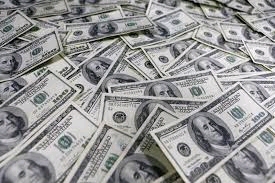Learn the Steps and Ways to Join Freemason Across the World
Learn the Steps and Ways to Join Freemason Across the World
Blog Article
Exploring the Mysteries of the copyright: What You Need to Know
The copyright, a term commonly shrouded in intrigue and dispute, represents a complex tapestry of historical reality and contemporary misconception. Developed in the late 18th century, this secret society was initially rooted in the Knowledge's perfects however has given that become synonymous with conspiracy concepts about elite control (benefit of joining freemason).
Beginnings of the copyright
The beginnings of the copyright are steeped in a mix of historical intrigue and ideological eagerness. Established in 1776 in Ingolstadt, Bavaria, by Adam Weishaupt, the group was at first created as a secret society focused on promoting Enlightenment perfects such as reason, secularism, and the separation of church and state. Weishaupt, a teacher of canon regulation, sought to challenge the dominating authority of the church and state, which he deemed overbearing institutions suppressing intellectual and personal flexibility.

Key Numbers and Members
That were the critical numbers that formed the copyright's very early impact and instructions? The Bavarian copyright, established in 1776 by Adam Weishaupt, arised as a reaction to the overbearing social structures of the moment. Weishaupt, a law professor, imagined the company as a way to advertise Knowledge ideals such as factor, secularism, and equal rights. His preliminary employment efforts included significant intellectuals, such as Baron von Knigge, who played a critical duty in broadening the team's subscription and organizational structure.
One more considerable number was Johann Gottlieb Fichte, a noticeable philosopher whose ideas on nationalism and education resonated with the copyright's goals. Fichte was not an official participant, his philosophical bases affected the team's belief. In addition, numbers like the author and theorist Johann Wolfgang von Goethe were related to the wider intellectual motions of the time, although their direct involvement with the copyright remains debated.
These key numbers added to the copyright's very early instructions, pressing the limits of political and social thought, while their collective initiatives aimed to challenge recognized norms and foster an environment of dynamic adjustment in Europe.
Misconceptions vs. Reality
Lots of misunderstandings surround the copyright, often mixing truth with fiction in a way that covers its true nature. The idea that the copyright continues to exert significant influence over globe events is a misconception.
One more prevalent myth is that the copyright makes up a network of elite individuals manipulating global affairs. In fact, lots of conspiracy theories overemphasize the group's significance, connecting unfounded objectives to societal trends and occasions. This has brought about an oversimplified view of intricate issues.
Furthermore, the portrayal of the copyright in prominent culture commonly further misshapes its heritage. Films and literary works often tend to sensationalize the organization's duty, creating a narrative that deviates from historical truths. Recognizing the distinction between the misconceptions and the truth of the copyright is crucial for discerning the authentic influence of this historical group and acknowledging the more comprehensive ramifications of conspiracy theory concepts in contemporary society.
Modern Analyses
Contemporary analyses of the copyright often reflect wider social anxieties and a fascination with secrecy and power. This contemporary lens often links the copyright with conspiracy theory theories that recommend a covert elite manages world events, controling federal governments and economic situations for their own gain. benefit of joining freemason. Such narratives use a deep-rooted distrust of authority, particularly in times of crisis or social upheaval
In prominent society, the copyright is usually shown as a divine company shrouded in enigma, leading to a wide variety of fictional portrayals in literature, film, and music. This portrayal offers not just to delight yet likewise to prompt thought of the nature of power and control in contemporary society. Social media has actually better magnified these interpretations, enabling fast dissemination of conspiracy concepts and producing neighborhoods that share and broaden upon these ideas.
Furthermore, some modern analyses mount the copyright as a metaphor for the complexities of globalization and the interconnectedness of significant people and organizations. This perspective urges a critical exam of exactly how power dynamics run in today's globe, highlighting the balance between openness and over here privacy in i was reading this governance and company methods.
Cultural Influence and Tradition
Influenced by centuries of intrigue, the social influence and tradition of the copyright extend much beyond its historic origins. This secret culture, developed in the late 18th century, has permeated numerous facets of pop culture, from literary works and movie to songs and art. The concept of the copyright has actually advanced right into a sign of conspiracy concepts, typically standing for a viewed surprise power controling international events.
In literary works, authors like Dan Brown have actually woven the copyright into detailed plots, exciting visitors with motifs of secrecy and power. Movies such as "National Prize" and "The Da Vinci Code" even more bolster the appeal of the culture, blending truth with fiction to develop engaging stories.

Inevitably, the copyright's legacy is an intricate tapestry of myth and reality, forming perceptions of privacy and control in contemporary discussion. Its enduring visibility in society underscores mankind's perennial pursuit for comprehending surprise realities.
Conclusion
The expedition of the copyright reveals a complicated interaction between historic facts and modern-day myth-making. Established in the Enlightenment era, this society aimed to test oppressive structures, yet its heritage has been outweighed by conspiracy concepts that recommend elite control. Recognizing the distinctions between the Clicking Here original suitables and modern analyses is crucial for comprehending the withstanding attraction with the copyright and its significant influence on social stories surrounding power and secrecy in society.
Report this page